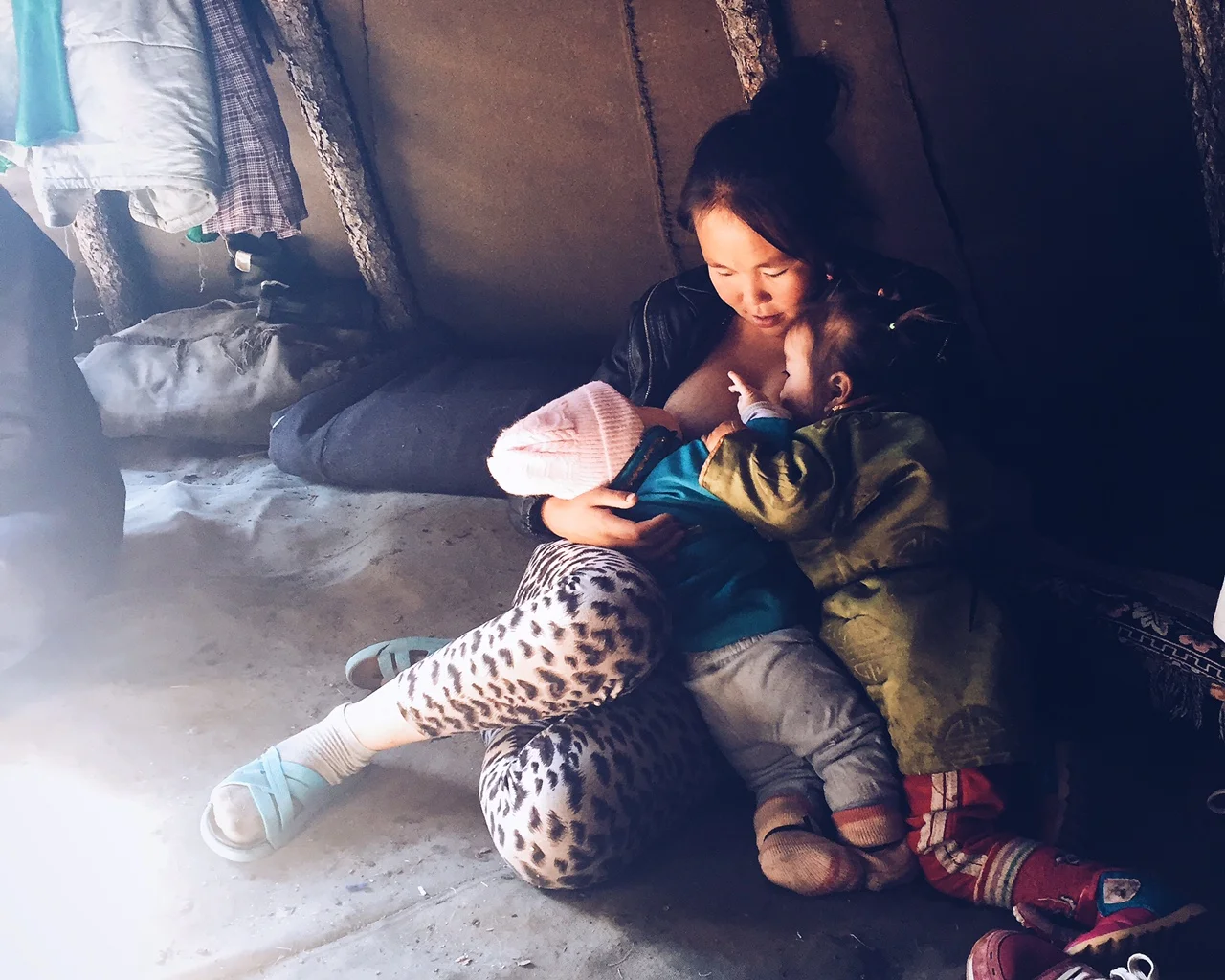About
'TIME TRAVELS THROUGH SOUND'
The fundamental purpose of Time Travels Through Sound is to bring oral tradition and music that faces extinction into the future.
In order to do this, I’ve traveled for a year and a half in Turkey, Kazakhstan, Mongolia, Japan, East Turkistan, Inner Mongolia, and Republic of Tuva(the autonomous regions of China and Russia). During this period I have filmed musical performances, wildlife, and stories.
During this project I will be producing:
• A Documentary Film
• A Music Album
• Magazine Articles
• Photographic Journal
Tsaatan family in Khovsgol, Mongolia.
Why this project
When a language dies we lose the knowledge, history and culture along with it. We also lose our connection to the land, oral traditions, and music. There’s about 7000 languages in the world, out of 85 of these languages are being spoken by %78 of the population. Every 14 days one of the lesser spoken languages become extinct, due to its speakers leaving it for a more common language.***
(Learn more: http://ngm.nationalgeographic.com/2012/07/vanishing-languages/rymer-text)
Creating art with purpose has always been on the forefront of my mind so what I’m hoping to accomplish with this project is to uncover ancient sounds and contribute into the music community. Mountains, tundra and coastal towns from Central Asia to North America are full of ancient culture, and I would like to celebrate it by creating art together with its natives.
In addition to the film, throughout the course of 18 months I will collaborate with local musicians to create a musical album of traditional songs. By donating you may give me a chance to bring back music that we didn't know existed, and help me document cultures before they disappear.
I've found myself deeply connected to the nomadic cultures along my journey, and over the past few years I've built countless friendships with people from these cultures. The tribes that I will meet are mainly Kazakh, Mongolian, Altaic, Tuvan, Uygur, Ainu, Yup’ik and Inuit. Even though my means of transportation is a bicycle, rather than a horse or reindeer, I feel I relate to these traditions in the sense that we all share the same spiritual connection to music; we write songs and throat-sing; and we share the same love and respect for nature.
The world losing a piece of its humanity is like us losing a piece of ourselves.
I believe that it is up to the artists of our generation to be bold, brave and passionate, to not only get to know these incredible people and their art, but also to inspire others from all around to know more about our world.
As a songwriter, photographer and cross-continent cyclist I will follow a roadmap that will allow me to be at the right place in the right moment, making music, shooting videos and photos from mountains of Altai to the tundra of North America.
THE DOCUMENTARY FILM
The vast majority of native groups in Central Asia are nomads that herd horses or reindeer, live in tough climates, have shamanistic beliefs and do throat singing. In Turkey and Japan the ancient descendants of these lands have been living in a sedentary state for hundreds of years, however they are still connected to nature and its sounds.
The vision of the project is to highlight the intercultural connection among nomadic cultures, and to point how that bond relates to us as individuals.
The upcoming film will portray the music and life of Turkic, Mongolic, Ainu and Ryukuyuan people. It will involve music making in many shapes and forms, and the feeling riding out in the taigas of Mongolia.
THE ALBUM
The music album will consist of traditional tunes from various regions. This will not only help support cultural preservation, but also help create educational content for ethnomusicology.
The common musical theme of these tribes is that they all throat sing. Throat singing is a type of singing that is used in both songs and music therapy. Stylistically, a throat singer can produce up to three notes at a time, as opposed to just one note - which is the norm in Western Music. This style differs from culture to culture. For instance, the Inuit and Ainu throat singing is traditionally performed by two women, one of whom repeats the notes that the other one sings in delay, creating a full melody together; yet Tuvan and Mongolian throat singing is generally sung in unison by men.
Deniz Aydemir
ME, MY PASSIONS AND BACK STORY
My name is Deniz, I was born and lived in Glendale, CA until the age of 3, then moved to Istanbul where I grew up and currently live. I’ve graduated from Berklee College of Music in May of 2015. When I've moved to Boston from Istanbul I concentrated my passion for music on the fretless guitar, "world music" (i.e. African, Brazilian, Middle Eastern, Chinese and Cuban music) , song-writing, throat singing, and the Japanese language. Meanwhile I worked at the Apple Store as a Business Specialist; Circle of Boston Nursery School as a Music Teacher; and Genuine Voices(a foundation helping youth in juvenile detention centers) as a Coordinator.
Right before starting Berklee, I lived in Mexico City for half a year learning Spanish and salsa. Through this experience I built the encouragement to travel from Spain to Turkey along the Mediterranean, a dream I’d had for years. Instead of using a tent, map or any money, I CouchSurfed, asked for directions and busked in the streets. This experience allowed me to accept myself as a world citizen, just like we all are. It also helped me to learn to plan ahead, but go with the flow of serendipity.
for my music and bio go to;
dennisaydemir.com

